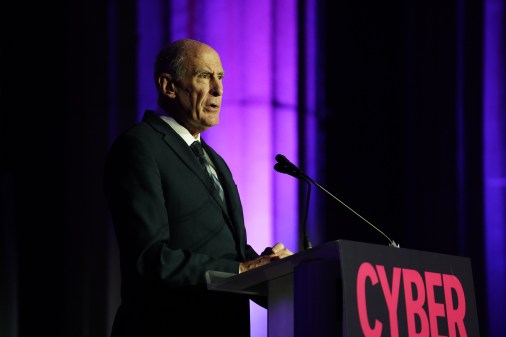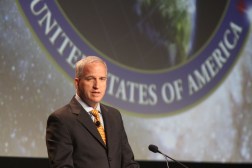The complex intelligence world 14 years after 9/11
Fourteen years since the attacks of Sept. 11, 2001, the threats facing the U.S. are vastly different and much more complex, some of the biggest players in the intelligence community said Thursday.
With the proliferation of intelligence data and the technology used for its collection and sharing post-9/11, intelligence officials have more information than ever before at their fingertips. However, sifting through that haystack of data for credible and worthwhile threats has become increasingly challenging.
“A lot has happened in those 14 years as far the digital environment and what is being done there by various groups that are still seeking to do us harm either here in the United States or overseas,” CIA Director John Brennan said at the Intelligence & National Security Summit. Brennan shared the stage with six counterparts from various intelligence agencies, like the FBI’s James Comey and the National Security Agency’s Adm. Michael Rogers.
Lt. Gen. Vincent Stewart, the director of DIA, said the intelligence community has always been complex, but in the nearly decade-and-a-half since the 9/11, technology is amplifying that even more.
“But the challenge now is how quickly information moves in this complex world, and how quickly technology moves in this complex world, and how it shifts the balance of power” by making nation-states more connected to their adversaries, Stewart said. He related it to the Cold War era’s binary threat landscape, where only a few major players had access to nuclear weapons.
Heads of several major intelligence agencies gathered Sept. 10 to discuss the state of U.S. intelligence at the Intelligence & National Security Summit . (FedScoop)
“You now not only have the very simple, kinetic options that you had in the Cold War, but you now overlay cyber on top of the that, and you overlay the information on top of that, and the pace at which information moves … has made the challenge: How do you cover down on all of that and deliver the information that’s necessary for our policymakers ahead of the networks?” he said.
Robert Cardillo, director of the National Geospatial-Intelligence Agency, acknowledged the current environment of information overload for its potential to be a powerful resource; but he also said it holds “the potential for chaos — analytic chaos.”
“If you can’t create some coherence around that noise … you could be overwhelmed by it,” Cardillo said. Today’s NGA officials, instead of “hunting imagery,” he said, are tasked with “filtering, gathering” and creating sense out of so much information.
On their own, Stewart said, none of these intelligence agencies “have enough depth and are in a position with enough pace to cover the world.”
But combined, through the integration of the Office of the Director of National Intelligence, and with the assistance of private industry, the large intelligence agencies think they can keep ahead of any threats, whether domestic or internationally.
Several of the intelligence directors touted Director of National Intelligence Jim Clapper’s work to coordinate the intelligence community’s efforts in the aftermath of 9/11.
“You need somebody who’s going to be able to orchestrate this across the community, and Jim Clapper has done it superbly,” Brennan said.
Making sense of the excess of intelligence data, though, requires more than integration and communication across the community — the intelligence community needs private innovation, Brennan said.
“Whether that’s major collection systems — satellites — all the way down to miniature collection systems and methods, analytics, databases, open source, social media … across the board we look to the great innovation of the U.S. private sector to be able to help us,” he said.
Stewart agreed. “For a long time we talked about the promise of open source data,” he said. “We now have the tools, or I hope industry will help us to get the tools, to really exploit the incredible amount of data that’s available in the open source … to focus the intelligence collection.”






